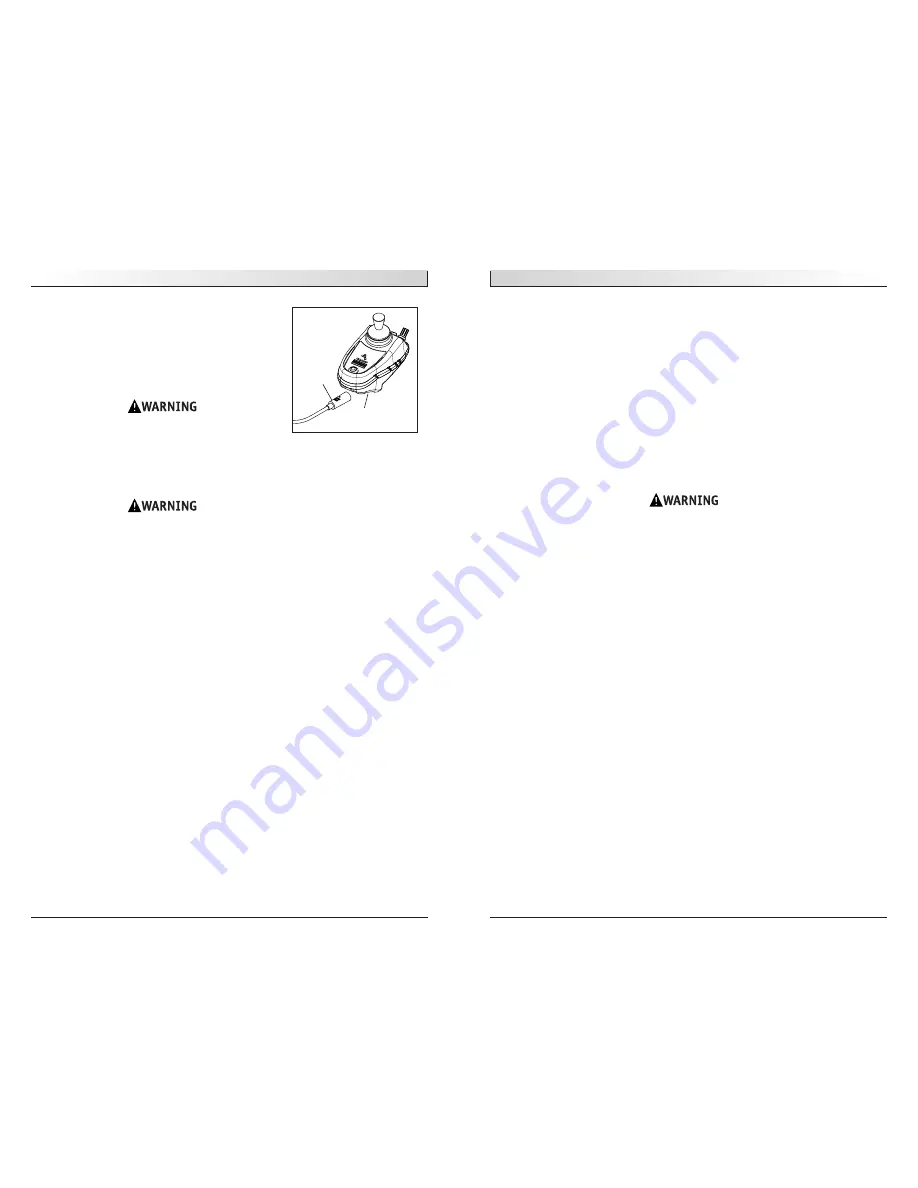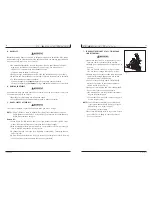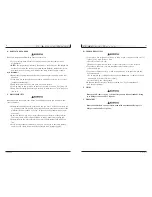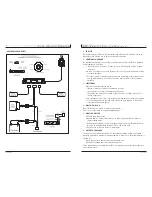
930466 Rev. A
X I . B a t t e r i e s
47
Always:
1. Use the charger that comes with
your wheelchair. Read and follow all instructions and warnings.
2. Make sure room is well ventilated.
3. Turn off all power to your chair.
4. Connect and disconnect battery cables with caution. Only connect the charger to
the power supply after the charger has been connected to the chair
5. Make sure to allow enough time to fully charge batteries.
Note: Batteries should never be left for long periods in the discharged state.
Unused or stored batteries should be given a charge once per month.
6. Charge batteries by engaging charger connector (A) to the charger/programmer
port (B) located on the joystick.
F. DISPOSING OF BATTERIES
1. All batteries once they have reached the end of their useful life are deemed to
be hazardous waste.
2. For further information on handling and recycling contact your local
recycling authority.
3. Always dispose of product through a recognized agent.
X I . B a t t e r i e s
930466 Rev. A
46
3. Tighten all terminal fasteners using two 1/2" box
end wrenches to 60 in-lbs (6.8 N.m).
4. Place the battery compartment lid on power
base and secure using the two (2) quarter turn
fasteners (push down on fasteners).
Never make direct contact across both battery
terminals, as an explosion may occur. A spark
may result in an explosion and/or fire resulting
in severe injury or death.
E. CHARGING BATTERIES
To avoid the risk of severe injury or death from
electrical shock, fire or explosion while charging:
1. Never connect charger to a 240 volt source.
The main input voltage is 110 volts. For
wheelchair manuals to be used outside the
U.S. omit (1).
2. Never touch the charger after it is connected
to an electrical outlet. This may cause electri-
cal shock.
•Connect charger to the power supply ONLY
AFTER you connect charger to the battery.
•Never connect or disconnect charger from
battery while there is power to the charger.
3. Never use an extension cord. Use of an
improper cord could damage the charger, or
cause a fire or electrical shock.
4. A battery emits explosive hydrogen gas during
charging. To reduce the risk of fire or explosion:
•Make sure area is well vented. Never charge
battery in a closed-in area.
•Never smoke or allow a spark, flame or high
heat near battery during changing.
•Never allow metal tools or chair parts to make
direct contact across both battery terminals.
5. Never look directly into cells when charging
battery.
A
B
Содержание Quickie P-222
Страница 28: ...N o t e s 930466 Rev A 54...






































